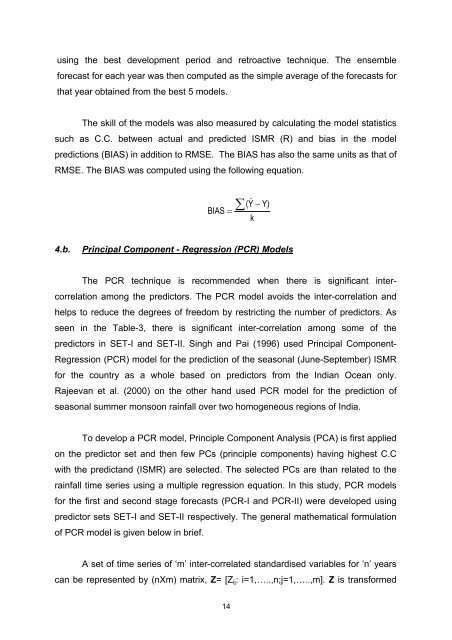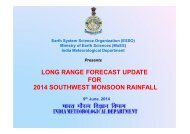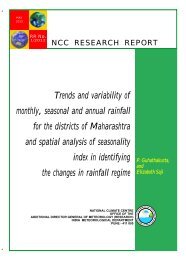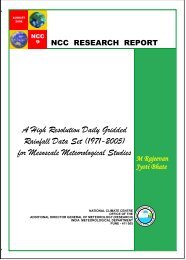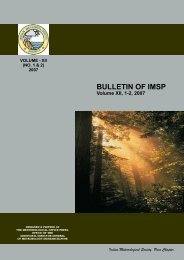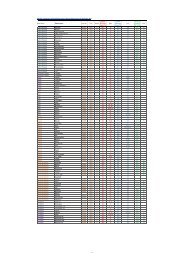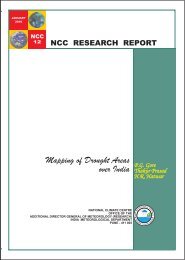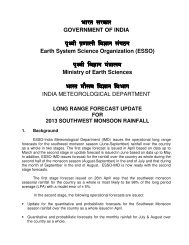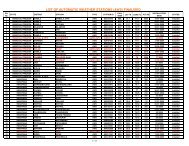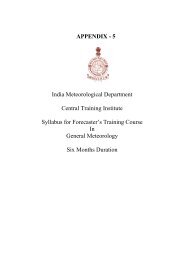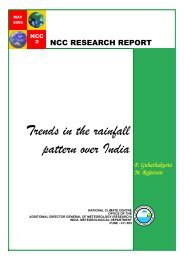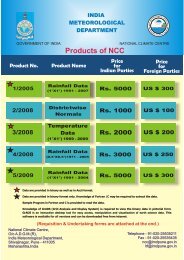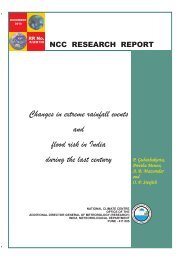NCC Report No. 1 - (IMD), Pune
NCC Report No. 1 - (IMD), Pune
NCC Report No. 1 - (IMD), Pune
You also want an ePaper? Increase the reach of your titles
YUMPU automatically turns print PDFs into web optimized ePapers that Google loves.
using the best development period and retroactive technique. The ensembleforecast for each year was then computed as the simple average of the forecasts forthat year obtained from the best 5 models.The skill of the models was also measured by calculating the model statisticssuch as C.C. between actual and predicted ISMR (R) and bias in the modelpredictions (BIAS) in addition to RMSE. The BIAS has also the same units as that ofRMSE. The BIAS was computed using the following equation.)∑ (Y − Y)BIAS =k4.b.Principal Component - Regression (PCR) ModelsThe PCR technique is recommended when there is significant intercorrelationamong the predictors. The PCR model avoids the inter-correlation andhelps to reduce the degrees of freedom by restricting the number of predictors. Asseen in the Table-3, there is significant inter-correlation among some of thepredictors in SET-I and SET-II. Singh and Pai (1996) used Principal Component-Regression (PCR) model for the prediction of the seasonal (June-September) ISMRfor the country as a whole based on predictors from the Indian Ocean only.Rajeevan et al. (2000) on the other hand used PCR model for the prediction ofseasonal summer monsoon rainfall over two homogeneous regions of India.To develop a PCR model, Principle Component Analysis (PCA) is first appliedon the predictor set and then few PCs (principle components) having highest C.Cwith the predictand (ISMR) are selected. The selected PCs are than related to therainfall time series using a multiple regression equation. In this study, PCR modelsfor the first and second stage forecasts (PCR-I and PCR-II) were developed usingpredictor sets SET-I and SET-II respectively. The general mathematical formulationof PCR model is given below in brief.A set of time series of ‘m’ inter-correlated standardised variables for ‘n’ yearscan be represented by (nXm) matrix, Z= [Z ij : i=1,…..,n;j=1,…..,m]. Z is transformed14


